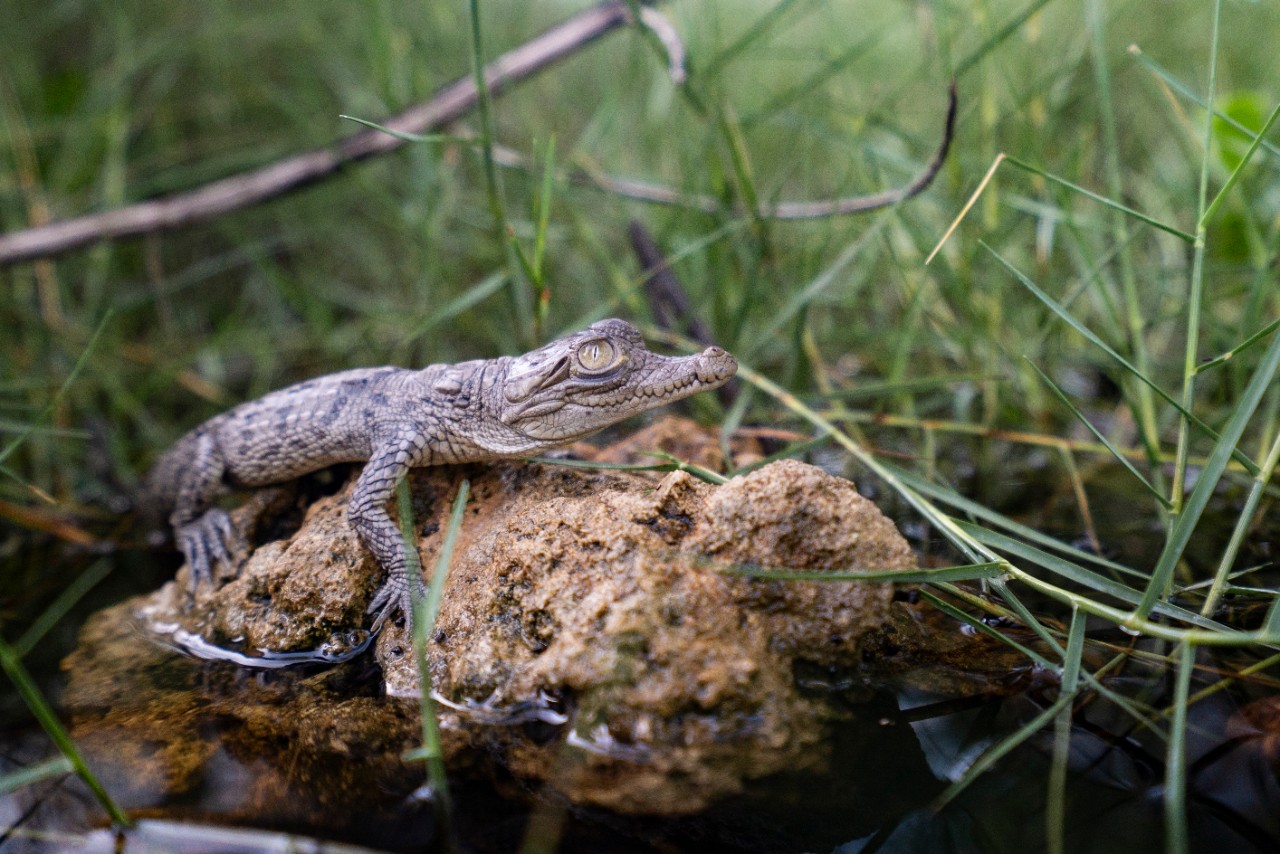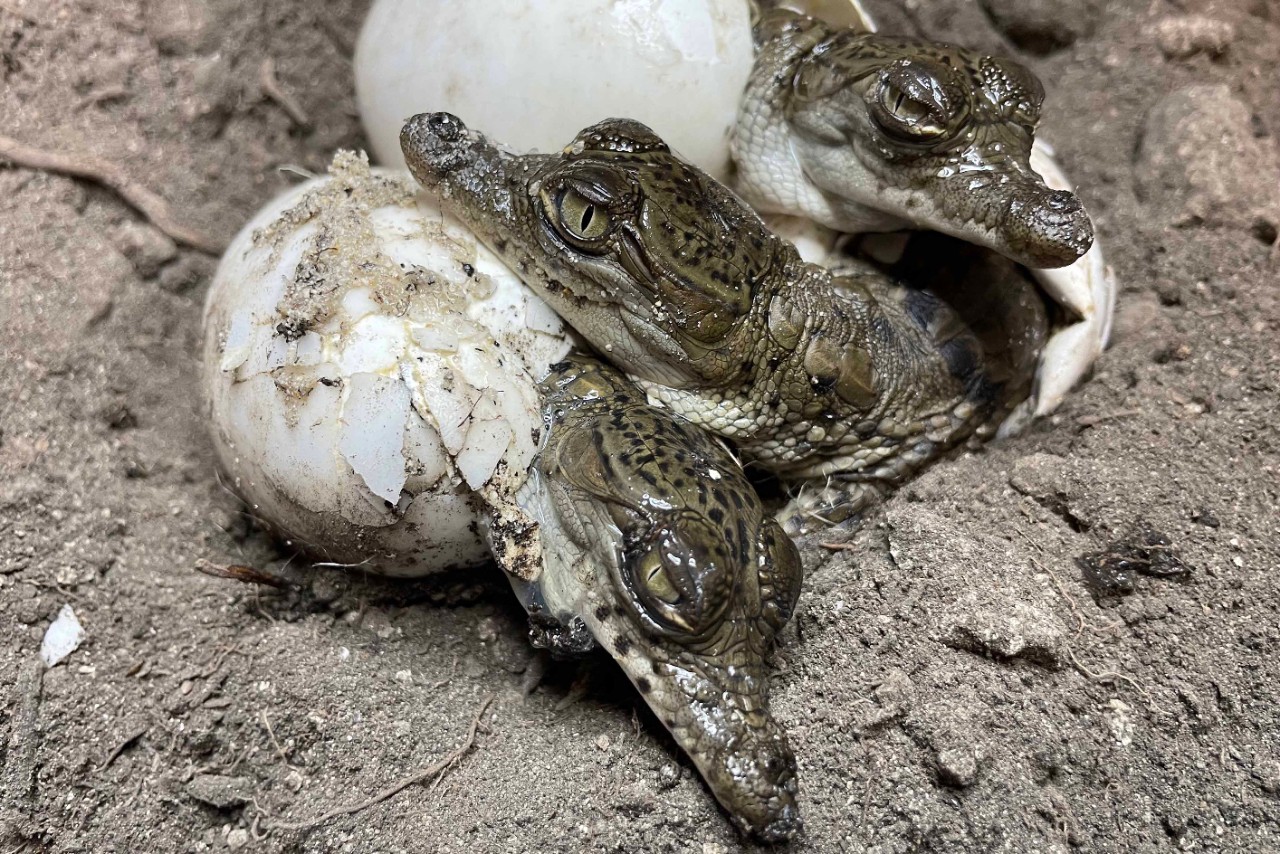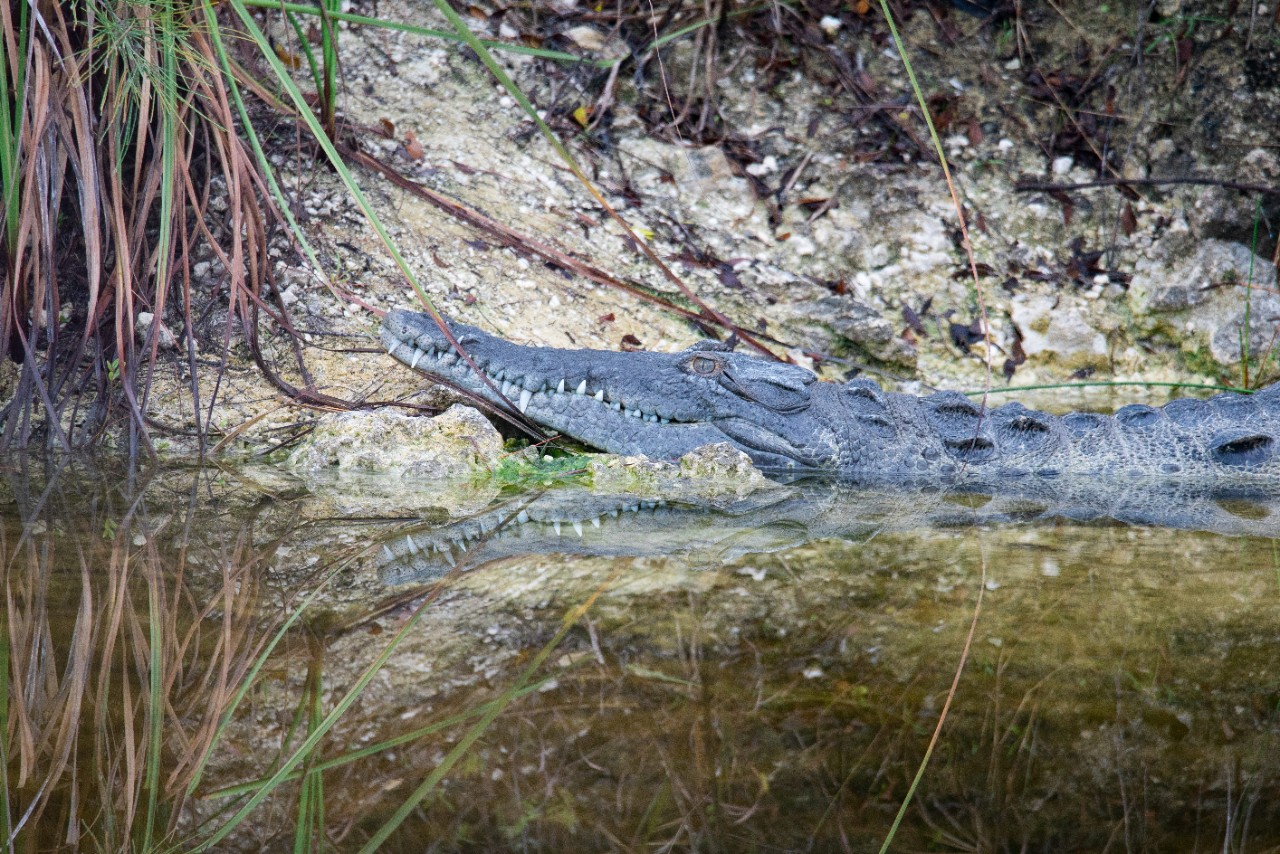The American crocodile is primarily a coastal species that ranges from Mexico, Central and South America, the Caribbean and even into South Florida. They are typically a gray/green color and can be found in the fresh/brackish/salt water of river estuaries, coastal lagoons and mangrove swamps where they feed on fish, crustaceans, small mammals, reptiles and birds.
Helping the Crocodile Make a Comeback
Throughout much of its range, the American crocodile was listed as endangered. FPL partners with federal and state conservation agencies to help with crocodile restoration efforts, resulting in the species being downlisted to threatened status. At our Turkey Point Power Plant in southern Miami-Dade County, we have worked for years to help this species rebound. In fact, the 2022 American crocodile nesting season at the plant resulted in a record-setting number of nests (33) and the third-largest number of hatchlings tagged and released (512), establishing a historic success in FPL’s management of the local crocodile population. This work includes:
- Preserving and creating habitat for crocodile nesting and basking
- Conducting surveys to document population size, activity, growth and survival
- Constructing ponds to help provide fresher water sources and nursery habitat for hatchlings
- Relocating hatchlings to refuges to increase survival rates
Our 6,000 acres of protected land has 168 linear miles of cooling canals that happen to be ideal crocodile habitat. The cooling canal system offers optimum nesting, breeding and basking habitat for crocodiles. The system represents one of three primary nesting populations in the U.S. FPL conducts a growth and survival study three times a year by capturing crocodiles within the system and collecting data.
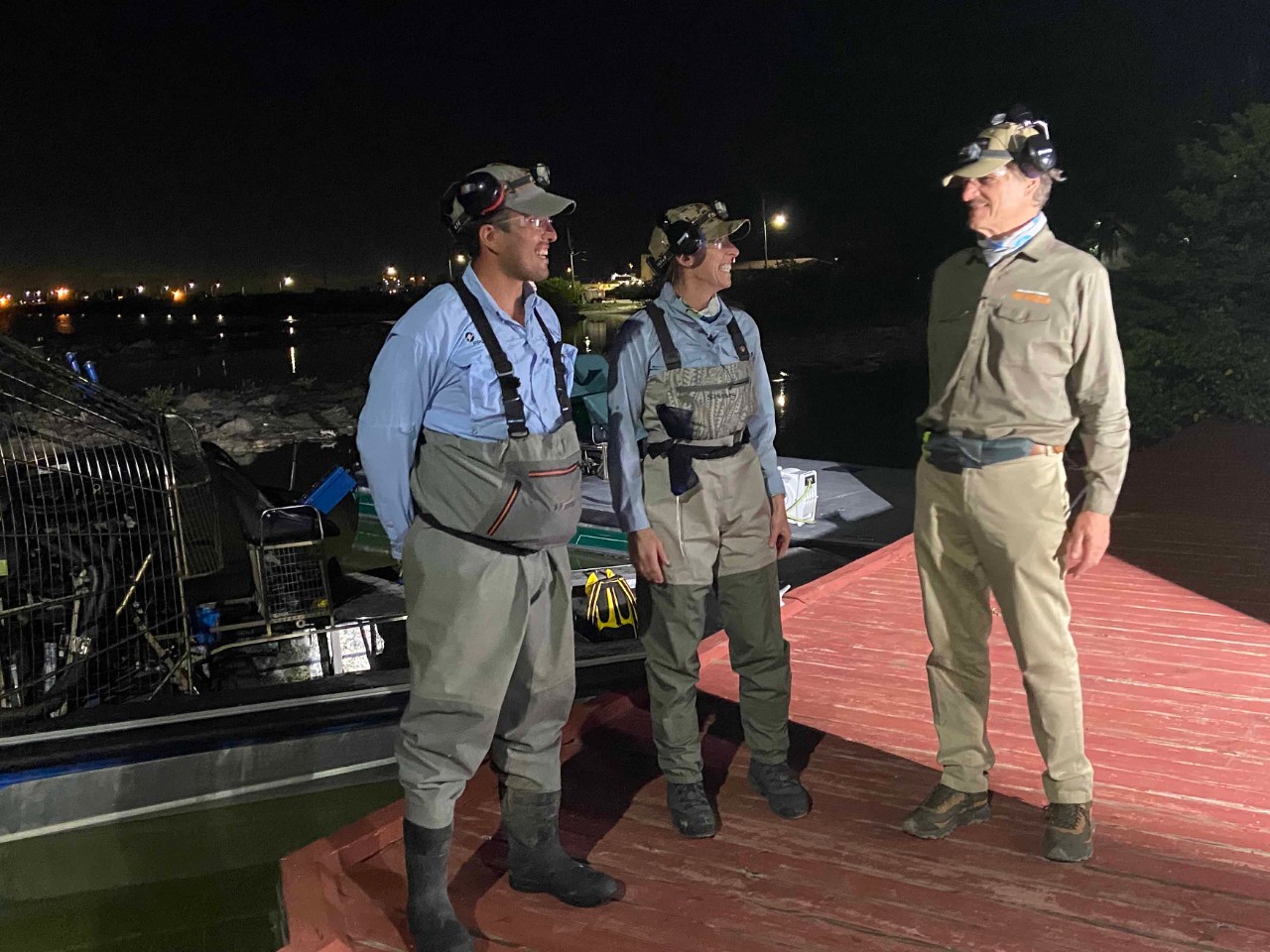
Mutual of Omaha's Wild Kingdom and Turkey Point
Mutual of Omaha’s Wild Kingdom, a popular nature TV show, visited FPL’s Turkey Point for an episode about its thriving American crocodile program.
Our Responsibility
- We take our responsibility to protect all wildlife, marine life and the environment very seriously, and seek to minimize and mitigate the impact of our developments before we begin a project, and once a project is operating, we continue to monitor potential impacts to biodiversity.
- We adhere to numerous policies and programs to protect threatened and endangered species.
- We are always evaluating our wildlife protection program to better protect animals and the environment.
- In addition to following all federal and state regulations, we make important contributions to scientific research to protect several vulnerable species and habitats and to better understand how to reduce impacts.
The first crocodile was discovered at Turkey Point in 1976.
On average, 300 to 400 American crocodiles live within and around the Turkey Point Cooling Canal system.
Crocodile monitoring began at Turkey Point when the first nest was found in 1978.
Turkey Point Clean Energy Center
About nine-tenths of the Turkey Point property remains in its natural state of mangroves and freshwater wetlands. There are more than 60 known species of birds and animals that inhabit the property.
In 1979, the majority of the site was designated critical habitat for the American crocodile. The system represents one of three primary nesting populations in the U.S. FPL conducts a growth and survival study three times a year by capturing crocodiles within the system.
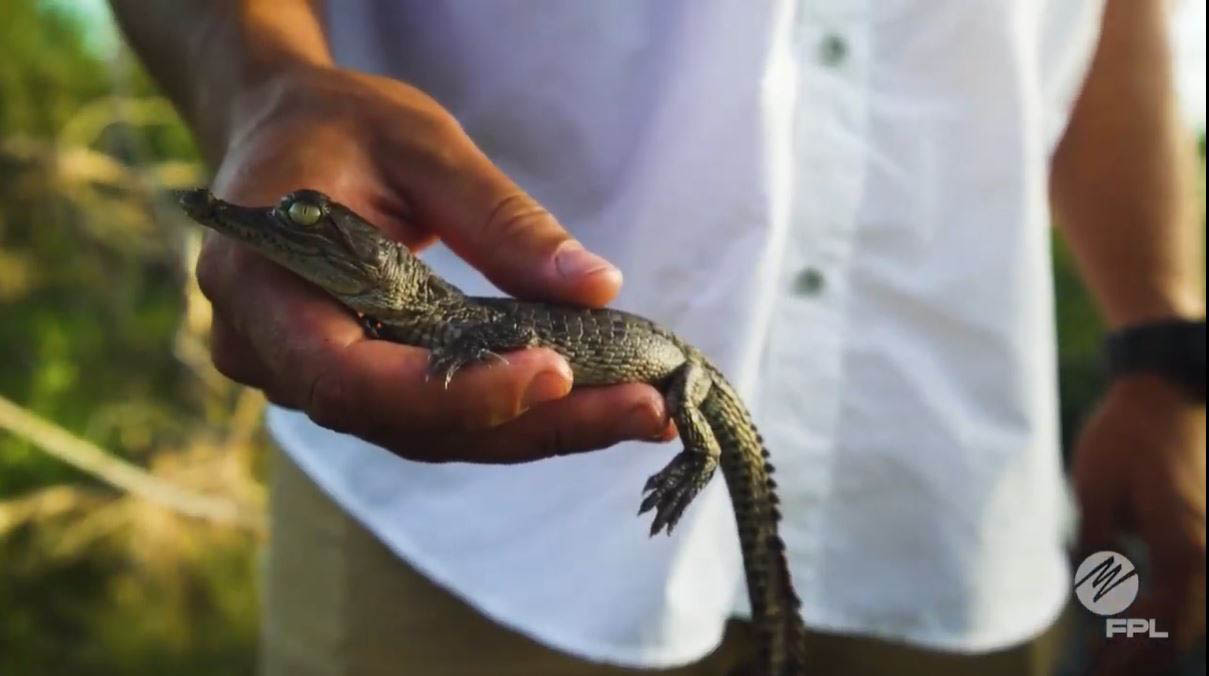
Crocodile Team
- Turkey Point nuclear power plant's "crocodile team" is on a mission: to monitor and protect the American crocodiles that make their home in the cooling canals surrounding the plant
Nesting & Monitoring
The American crocodile’s breeding season runs from mid-February through mid-April. Females can lay between 30 and 50 eggs, which they monitor during the 90 days of incubation. Like some other reptiles, the gender of hatchlings is determined by nesting temperature. Hatchlings emerge from their nests between late June and early August. The mother scoops hatchlings up in her mouth and carries them to the water. There is generally minimal parental care once the young crocs are transported to the water. Nesting and hatchling surveys are conducted from April to August.
Want to know more?
- FPL's Wildlife and Habitat Preservation
- Energy Education - FPL is committed to education, curriculum, grants and workshops
